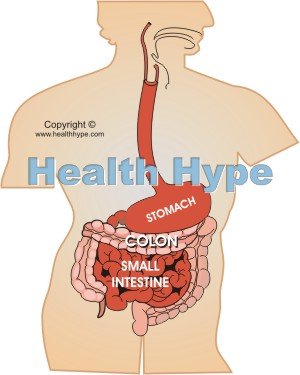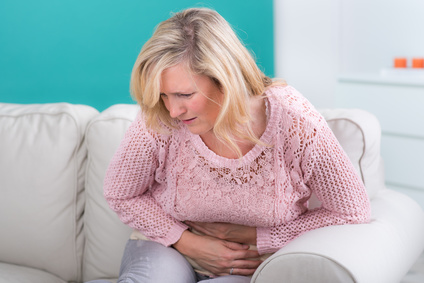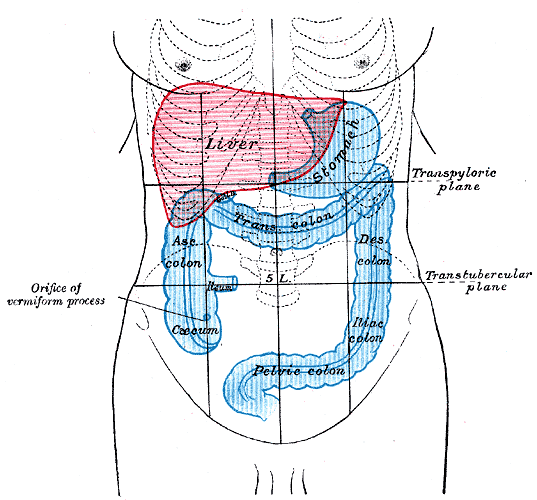Bowel Pain (Small and Large Intestine) Causes and Symptoms
The bowels (small and large intestines) occupy most of the abdominal cavity. The small intestine is about 20 feet (6 meters) long in adults. It is coiled in the middle of the abdomen. The large intestine is shorter at 5 feet (1.5 meters) and lies along the sides of the abdomen. Pain in the bowels can arise for several reasons ranging from blockages within it to disorders in movement within the bowels and diseases that affect the bowel walls.
Location of Parts of the Bowel
It is important to understand the different parts of the bowel when looking at possible causes of bowel pain. The small intestine is divided into three segments, whereas there are four regions in the large intestine.
The small intestine includes the:
- Duodenum which is a C-shaped short segment of the small intestine that leads from the stomach. It lies in the upper middle region of the abdomen.
- Jejunum which is the middle segment of the small intestine leading from the duodenum. It is coiled in the middle of the abdomen. It is approximately the same length as the ileum.
- Ileum which is the last segment of the small intestine leading from the jejunum. It is also coiled in the middle of the abdomen and then ends where it joins the cecum of the large intestine.

The large intestine includes the:
- Cecum which is located in the lower right abdominal region. The vermiform appendix is attached to the cecum.
- Colon which includes the:
– Ascending colon that runs from the cecum up the right side of the abdomen.
– Transverse colon that continues across the upper middle abdominal region.
– Descending colon that runs down the left side of the abdomen.
– Sigmoid colon that runs from the lower left abdominal region to the middle of the pelvis. - Rectum which continues from the sigmoid colon to run to the lower pelvis where it connects to the anal canal.
- Anal canal which is a short segment than ends at the anus.
Read more on intestine anatomy.
Bowel Pain Symptoms
Bowel pain is a symptom but on its own it can be difficult to diagnose the exact cause. It is important to note that the abdominal cavity is tightly packed with organs. Therefore abdominal pain on its own cannot be immediately be ascribed to a bowel problem. Other symptoms must be considered along with the pain as well as the results of diagnostic investigations. Bowel symptoms apart from pain may include:
- Changes in bowel habit – constipation or diarrhea.
- Excessive flatulence.
- Nausea and vomiting.
- Stool abnormalities, like mucus in the stool or blood in the stool.
- Loss of appetite.
However, some of these symptoms may occur with other abdominal problems, like gallbladder disease, although the bowel itself is unaffected. Symptoms that start or worsen in relation to meals may also be indicative of a bowel problem.

Causes of Bowel Pain
The various causes of bowel pain have also been discussed under duodenal pain and colon pain. Causes of bowel pain may vary and includes conditions like bowel trauma, infections, inflammatory diseases, circulatory problems, obstruction and tumors, both benign (non-cancerous) and malignant (cancerous). Many of the symptoms of these different conditions overlap and it can be difficult to diagnose the exact cause without medical investigations.
Enteritis is the term for small intestine inflammation. Colitis is the term for large intestine inflammation. When both the small and large intestines are affected simultaneously then it is referred to enterocolitis. Enteritis, colitis or enterocolitis can occur for various reasons but infections and inflammatory diseases are the main causes. Bowel pain will typically be present as pain is a feature of inflammation.
Infections
Bowel infections may involve either the small intestine, large intestine or both. Viruses, bacteria and protozoa are the main infectious agents which can be contracted through various routes. Consuming contaminated food and water are one of the most common ways in which these pathogens enter the body and then infect the bowels. It is often associated with food poisoning but can be contracted through other routes.
However, infections may occur for other reasons as well. This is seen in conditions like appendicitis where the vermiform appendix becomes infected if there is a blockage within it. Appendicitis is one of the more serious acute causes of bowel pain as the inflamed appendix can rupture and lead to life-threatening complications. Diverticulitis is an infection of abnormal pouches in the large intestine (diverticula) which are otherwise asymptomatic.
Inflammation
Non-infectious of bowel inflammation may occur due to several different causes. From toxic substances that are ingested to autoimmune diseases, bowel inflammation without an infection can cause both acute and chronic bowel pain. This includes conditions like celiac disease, inflammatory bowel disease (IBD), microscopic colitis and diverticulitis which can occur without an infection.
Circulation
Blood flow to the bowels can be disrupted and even cut off in certain instances. This results in conditions like ischemic colitis which affects the large intestine and mesenteric ischemia which affects the small intestine. The interruption in blood circulation to these parts of the bowel may arise with low blood pressure, blood clots, tumors, injuries, enlargement or twisting of the bowels, certain medication and various other substances.
Obstruction
Obstruction within the bowels can occur for many reasons. Twisting of the bowels (volvulus), tumors and compression of the bowels from surrounding structures may block movement within the bowels. This can cause stretching of the bowels as food, fluid and feces is backed up in the bowels.
A portion of the bowel, mainly the narrower small intestine, can be trapped within pouches on the abdominal wall hernias) which blocks the affected portion. A ‘false obstruction’, also referred to as a pseudo-obstruction, may arise when the muscles in a segment of the bowel wall does not work properly and cannot push the intestinal contents along.
Tumors
A host of benign and malignant tumors as well as other growths may be responsible for bowel pain. Polyps are among the more common benign tumors seen within the bowels, although these growths can sometimes turn cancerous. Small intestine cancer is not as common as colorectal cancer which is among the most common and deadly cancers. Tumors in surrounding organs can press on the bowels causing obstruction or pain.
Functional
Functional bowel disorders are conditions of the intestines in the absence of any identifiable disease. However, there are symptoms and often some abnormality of bowel function. This is commonly seen with irritable bowel syndrome (IBS) which is one type of functional bowel disorders. Abdominal cramps or bowel pain is a characteristic feature of IBS along with abnormalities in bowel habit, like constipation or diarrhea.
References
- Abdominal pain. Medical University of South Carolina
- Pain in colon. Health Line
- Colitis. Medscape






